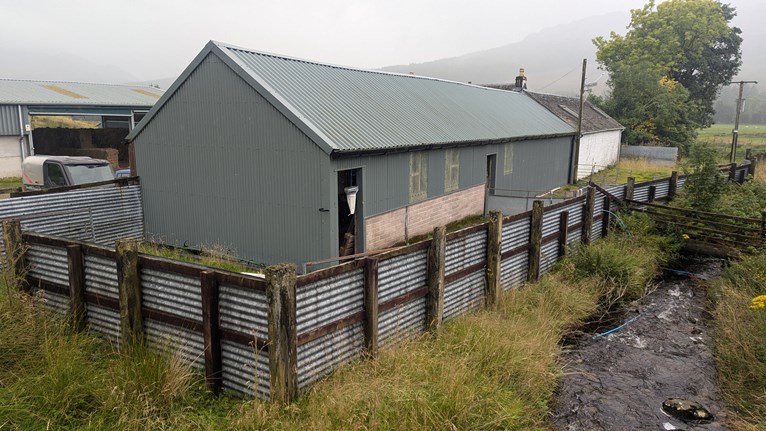How Midge Trapping is Helping Scotland to Stay Ahead of Disease Risks

Ever wondered how scientists keep tabs on those tiny biting midges that can cause big problems for livestock health? Across Scotland Jack Hearne and Davide Pagnossin from EPIC (the Centre of Expertise on Animal Disease Outbreaks) are doing just that — setting up midge traps on farms to track when these insects are active and what that means for animal disease risks.
With climate change shifting seasonal patterns, this work is more important than ever. Understanding when midges are active — and when they’re not — helps identify safe periods for livestock movement and reduces the risk of spreading serious diseases like Bluetongue and Schmallenberg.
Why do midges matter?
Biting midges may be small, but their impact on animal health can be significant. The main culprits of concern right now are diseases like Bluetongue and Schmallenberg.
-
Schmallenberg is already present in parts of southwest and central Scotland.
-
Bluetongue cases, meanwhile, have been rising in England and Wales — as of 3 October 2025, there were 91 confirmed cases in England and four in Wales.
Knowing when midges are on the move can make all the difference in managing these risks effectively.
How temperature helps track the season
Temperature plays a key role in determining how long the midge season lasts. Because Scotland tends to be cooler than the rest of the UK, the midge season here is generally shorter.
Across the UK, researchers estimate there are typically two to three generations of midge species each year, depending on factors like temperature, climate, and available habitats (think damp areas and dung heaps on farms).
By using temperature data alongside trapping, scientists can get a more accurate picture of when midges disappear for the season — and when it’s safe to move livestock without the risk of disease transmission.
Midge trapping in action
To get precise, Scotland-specific data, EPIC scientists have set up a national surveillance programme that helps the Scottish Government estimate the “midge-free” periods of the year.
In spring 2025, traps were deployed at:
-
Three SRUC farms in Dumfries, Midlothian, and the West Highlands
-
The University of Glasgow’s farm in West Dunbartonshire
Weekly trapping began in April, helping researchers confirm that late April marked the start of the 2025 midge season. Later in August, trapping resumed to determine when midges began to disappear — and with that, when the risk of Bluetongue and Schmallenberg started to drop.
Importantly, EPIC’s trapping methods align with those used by APHA (Animal and Plant Health Agency) in England, ensuring that any differences observed between the two countries’ midge seasons are reliable and scientifically sound.
What the data is telling us
By late September 2025, the Scottish Government eased livestock movement restrictions, guided by temperature-based modelling. The EPIC and SRUC teams are now comparing these policy decisions with real midge activity data from their traps.
This will help refine how Scotland predicts the end of the vector season — improving disease control decisions and supporting farmers with more certainty.
Midge trapping also has wider benefits. As new midge-borne diseases like epizootic haemorrhagic disease threaten to emerge due to climate change, this kind of surveillance will be key to protecting Scotland’s livestock industry in the years ahead
What's Next?
Looking to the next midge season, SRUC and EPIC plan to expand the number of farms involved in trapping. More sites mean better data, stronger confidence in the results, and more precise identification of “midge-free” windows.
The goal? To keep Scotland’s livestock industry safe from disease risks — while ensuring movement periods are as flexible as possible.
As autumn monitoring continues, SRUC Veterinary Services will share updates to keep vets and farmers informed.
For monthly and quarterly disease surveillance reports, visit www.sruc.ac.uk/vets.
“On the Hoof” keeps veterinary practitioners up to date on locally relevant animal health information. If you’d like to receive these updates directly — or unsubscribe — please email OnTheHoof@sruc.ac.uk.
Posted by SRUC Veterinary Services on 14/10/2025
